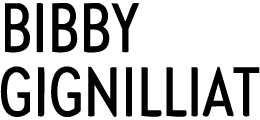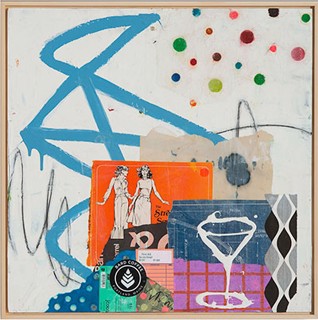Margot Hartford
Bibby is an excellent artist and a passionate teacher, and her workshop generously offers up how she tackles a painting. She demonstrates her techniques, which she has honed over years of experimentation and practice, and which she presents with an infectious enthusiasm. Bibby’s work is unique and fun, and it was an honor to take her workshop to get an inside look into her secrets.
Kathryn Keller
Bibby is a fun enthusiastic teacher who after years of classes with the best has now incorporated all she has learned into a one stop learning experience. The compilation of all this diligent study along with her excellent teaching skills will guarantee you will walk away from her classes with a font of knowledge. So if you are a beginning or experienced painter, her deep pockets of technique will inspire you.
Rachel Davis
With so many online art courses available, how do you know which one to choose? I’ll make it easy - choose Bibby’s. Bibby is a phenomenally gifted and natural teacher - generous, empathic, passionate about sharing her deep joy in creating and igniting that passion in others. You’ll leave this class with finished work and a way to continue cutting loose and playing on your own.
1. What Materials Will I Need?
Panels
You can purchase panels and frames online at Blick, Canvas Place or your local art store. If you can’t find 14x14x7/8, you can substitute a similar size. Or if you want custom panels and frames, try Canvas Place or Bara Woodshaping and Design (@bara_woodshaping). There may be a wait for custom panels.
Paint Roller
You can use a paint brush to coat the panels. I prefer a paint roller.
Scissors
A good pair of scissors is important.
Brushes
My favorite brushes are nylon brushes. The paint goes on easier and they leave few brush marks.
Brayer
Rubber brayers help to adhere collage scraps flat as they move out air bubbles.
Sand Paper
I recommend 100 grit sand paper. You can make your own sanding block with an extra piece of wood.
Varnish
I use SPAR Water Based Urethane in Satin. If you can’t find this, you can use matte or gloss medium which is carried by any art supply store.
Paint Scraper/Knives
I like using paint knives to apply paint.
Sponges
I prefer sponges that have an abrasive side as it is better for creating good surfaces.
Condiment Bottles
It is best to get condiment bottles that have lids attached. But you can also recycle Sriracha bottles or other condiment bottles.
House Paint
You can purchase half gallons and gallons of paint on sale that are in the reject pile. All paint stores have these for sale at a discount and are usually very high quality. Benjamin Moore offers a great selection of high-quality paint. It can be purchased in three grades. I suggest mid-grade in Regal Select. You could also use the least expensive, Ben. Mascarpone paint is a good cream white color. Other good BM colors are: Super White (very white), Payne’s Gray (a deep gray blue), Blackjack (a gray black), Cosmopolitan (light gray) and White Dove (creamy white). If you can’t find Benjamin Moore, you can always use another brand of house paint. You can also pick some tints and mix your own colors. If you don’t want to buy house paint, regular acrylic paints work fine. Nova and Golden are both good brands
Spray Bottles
You can recycle old cleaning supply bottles or purchase a new spray bottle.
Scraps
Keep your eyes open for scraps and collage materials that can be found everywhere, including flea markets, gritty parts of town, sidewalks, restaurants (menus are good!), and antique stores. Examples of good scraps include old music, books, stamp collections, postcards, old letters, billboard scraps and paint chips from paint stores.
2. How do I ask a question during class?
Often, the answer to your questions is in the handout provided. But if not, the best way to contact me is via the Facebook group. I recommend tagging me in your post to ensure I see it. Or if not in the Facebook group, you can ask a question below the module in the comments section.
3. What varnish do you use and what if I can’t find it?
I use varnish as a glue and my topcoat. The varnish I use is a water-based Varathene (though it comes in oil too but get the water-based one in a green can). It is UV-protected, mold and mildew and waterproof. If you are unable to locate it, you can use other water-based UV varnishes or a matte or gloss medium of your choice. Mod Podge is a good glue too. Painting or collaging over a piece that has been varnished is ok.
4. How do I get any technical questions answered about the platform?
I would refer all technical questions to the live chat function on the platform.
5. How long will I have access to the class?
Students receive full access to the course for at least one year from enrollment. Access has not been limited to date, allowing continued viewing and review of lessons over the years. Unfortunately, I cannot have you download the lessons because it is proprietary information.
6. Can I use Canvas vs. Wood?
Yes, canvas works great. You can either gesso the canvas or use housepaint. Some brands of housepaint can peel off in which case, I would gesso. I have not had that issue with Benjamin Moore. You could also use a primer: Bull’s eye and Zero are good primers.
7. Can I Work Larger/Smaller than 14x14?
Yes, you can work whatever size works for you. I recommend in the beginning to work on the smaller size until you grasp the concept. Have at it!
8. Do I have to use House Paint?
You are welcome to use any acrylic paint you wish. If not using house paint, I recommend Nova Color or Golden Brand. Some good brands of house paint and artist paint are as follows:
- Benjamin Moore Aura line
- Liquitex BASICS Acrylic Paint
- Winsor & Newton Galleria Acrylic Paint
- Grumbacher Acrylic Paint Set
- Castle Art Supplies Acrylic Paint Set
- Blick Artists’ Acrylic
- Liquitex Professional Acrylic Set
- Utrecht Artists’ Acrylic Colors
- Golden Heavy Body Acrylic
Lightfastness is a scientific measure applicable to all colorants, dyes, and paints. Good paints state their ratings on scale (1-8, usually), and if it’s low, I don’t buy it, no matter how seductive.
9. Will my art fade?
With UV protection, your piece will be less likely to fade. I recommend in general with any art, to not place it in direct sunlight or in a very dry environment.
10. How do you make your drips?
I use housepaint right out of the can. Older paint can get thick in which case, you can just add water. You can also get Golden fluid paint products or Nova color. See resources under Do I have to use House Paint? (above)
11. Are you going to be offering any other classes?
How can we learn more from you? I have an online totem workshop as well as in person mixed-media and totem workshops. You can find this information on my website. I also provide instructional reels highlighting tips and tricks on Instagram. @bibbygart
12. Where did you get your Freida tights?


